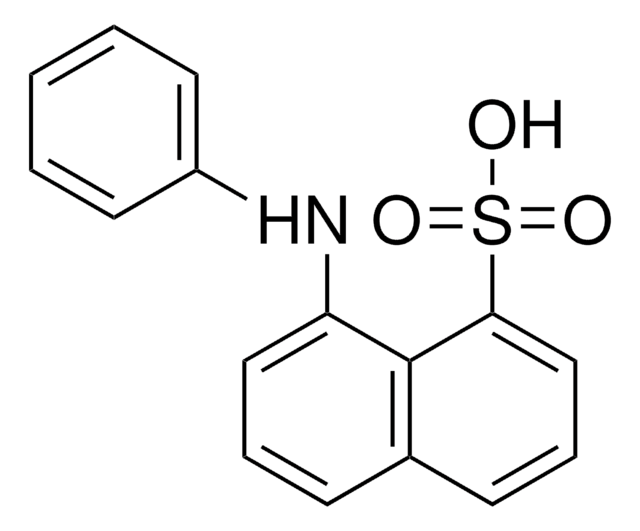1.04220
Guanidinium chloride
LAB
Synonym(s):
Guanidine hydrochloride, Guanidinum hydrochloride, Carbamimidoylazanium chloride, Aminoformamidine hydrochloride, Aminomethanamidine hydrochloride, Guanidinium chloride
About This Item
Recommended Products
Quality Level
potency
655.3-907.1 mg/kg LD50, oral (Rat)
>2000 mg/kg LD50, skin (Rabbit)
pH
4.5-5.5 (20 °C, 100 g/L in H2O)
mp
180-185 °C (lit.)
188 °C
solubility
2150 g/L
density
1.3 g/cm3 (lit.)
bulk density
550‑620 kg/m3
storage temp.
2-30°C
SMILES string
Cl[H].NC(N)=N
InChI
1S/CH5N3.ClH/c2-1(3)4;/h(H5,2,3,4);1H
InChI key
PJJJBBJSCAKJQF-UHFFFAOYSA-N
Looking for similar products? Visit Product Comparison Guide
Application
Analysis Note
Identity (IR-spectrum): passes test
pH-value (10 %; water): 4.5 - 5.5
Melting range: 182 - 186
Chloride (calc. on anhydrous substance): 36.1 - 37.1 %
Signal Word
Warning
Hazard Statements
Precautionary Statements
Hazard Classifications
Acute Tox. 4 Inhalation - Acute Tox. 4 Oral - Eye Irrit. 2 - Skin Irrit. 2
Storage Class Code
11 - Combustible Solids
WGK
WGK 1
Flash Point(F)
Not applicable
Flash Point(C)
Not applicable
Certificates of Analysis (COA)
Search for Certificates of Analysis (COA) by entering the products Lot/Batch Number. Lot and Batch Numbers can be found on a product’s label following the words ‘Lot’ or ‘Batch’.
Already Own This Product?
Find documentation for the products that you have recently purchased in the Document Library.
Customers Also Viewed
Our team of scientists has experience in all areas of research including Life Science, Material Science, Chemical Synthesis, Chromatography, Analytical and many others.
Contact Technical Service





